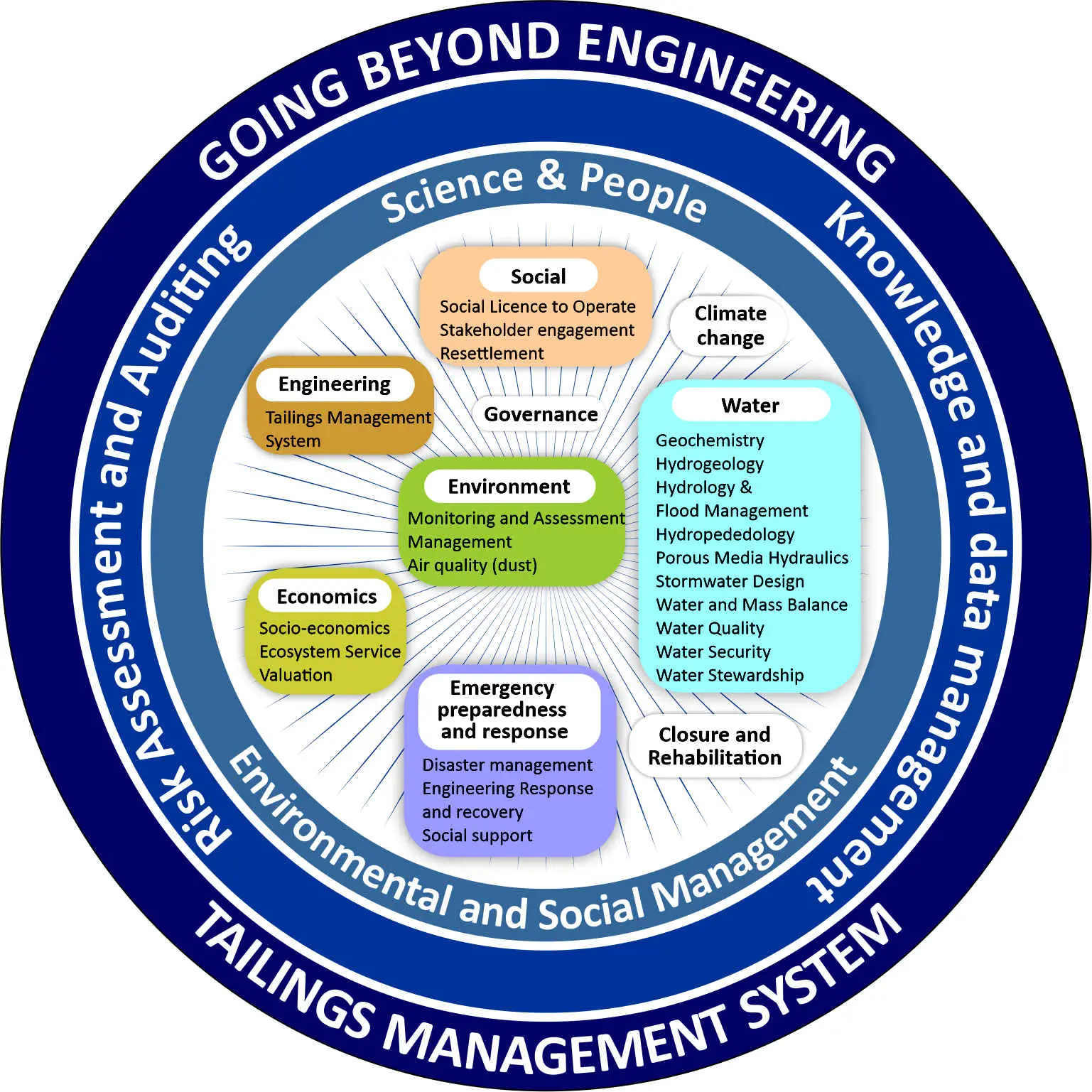With the release of the Global Industry Standard on Tailings Management (GISTM) in August 2020, the foundation of this field has shifted, and the stakes have been raised. The standard sets a new bar for corporate responsibility and opens the door for significant improvement in performance. Among its demands is that mines engage with multiple spheres of influence when designing and managing tailings storage facilities (TSFs).
Once the exclusive domain of geotechnical, civil and water engineers, TSF management now involves a complex array of requirements and stakeholders – which the GISTM seeks to address. As the mining sector comes to terms with the implications of this standard, it is also clear that a TSF is no longer considered a temporary operational structure; rather, it must endure safely for centuries.
Over the years, TSF management has included the sciences of water, soil, bedrock and geohydrology, as well as the geological and seismic setting. It also deals with environmental issues such as stormwater and air quality, as well as long-term sustainability and governance. The field also accommodates the local and regional setting, including communities and regulators. Financial institutions and investors have recently weighed in on questions of safety and risk.
The GISTM embraces all these spheres, so achieving the requirements of this standard will require a comprehensive range of disciplines and skill-sets. The standard itself recognises this, especially in its discussion of the Integrated Knowledge Base – one of six topic areas which is outlined alongside Affected Communities; Design, Construction, Operation and Monitoring of the Tailings Facility; Management and Governance; Emergency Response and Long-Term Recovery; and Public Disclosure and Access to Information.
The TSF design and management remain key technical elements in the GISTM, which highlights the range of expertise, knowledge and data required for site characterisation. Generating this data requires geomorphologists, geologists, geochemists, hydrologists and hydrogeologists – not to mention civil and geotechnical engineers and experts in seismicity. With the detailed input from each of these disciplines, the necessary breach analysis required by the GISTM can be developed. This would consider failure modes, site conditions and slurry properties – in some cases predicting the consequences of failure.
The GISTM is essentially a high-level statement of intent – the ‘why’ and ‘what’ which precedes the more detailed guidelines and regulations. TSF owners’ in-house standards and procedures, as well as the recently released guidance and conformance protocols from the SAIMM, will define the ‘how’.
Having the necessary knowledge and data to safely build and manage a TSF is one challenge; using that knowledge effectively is another. The GISTM therefore points out that mines must use all elements of their knowledge base – “social, environmental, local economic and technical” – to inform their timeous decision making through the life-cycle of the TSF. There is also the role of emergency response and humanitarian aid to consider. This often demands a level of information sharing and operational integration that many mines simply have not yet achieved.
In many cases, the information that mines need is already available on site, although new systems of monitoring and analysis may also be required; the technology to do this is readily accessible, as is the expertise. Often, however, a paradigm shift is needed to overcome internal 'silo' thinking.
SRK Consulting has been involved in TSF design and management for decades, and has also been a pioneer in supporting clients with innovative solutions to their environmental and social impacts. Our teams embrace diverse disciplines and skill-sets, and have evolved the kind of multi-disciplinary approach and experience demanded by the GISTM.
SRK Consulting’s multi-disciplinary approach and capability positions it well to help mining companies to align their TSF practice with the requirements of the GISTM. Our experience covers a range of disciplines and sub-disciplines relevant to the new standard, from engineering and water management to ESG and disaster management. With our integrated approach, we ensure that inter-disciplinary teams work closely and effectively for optimal results. Click on the GISTM link

